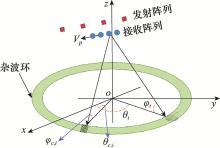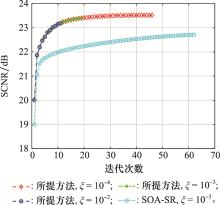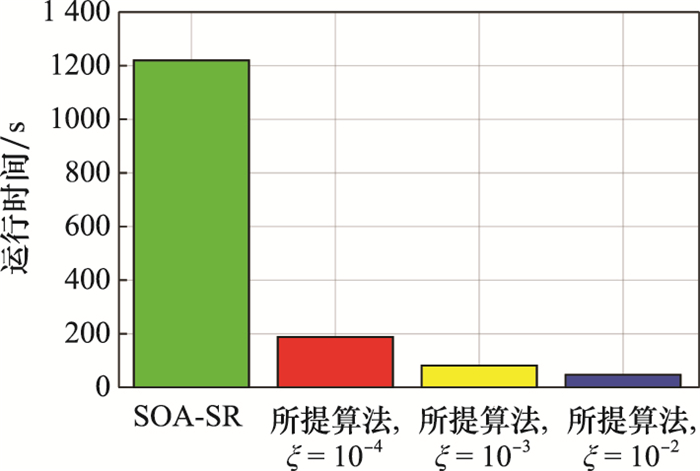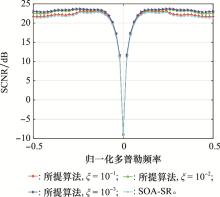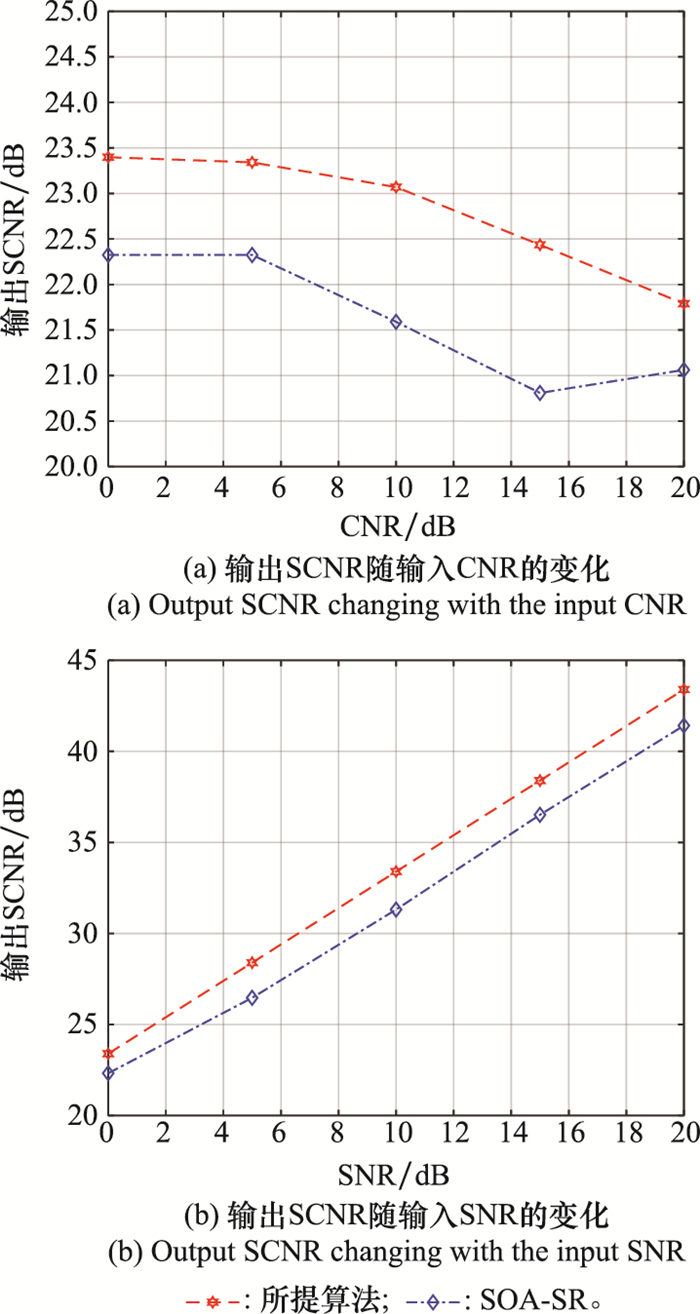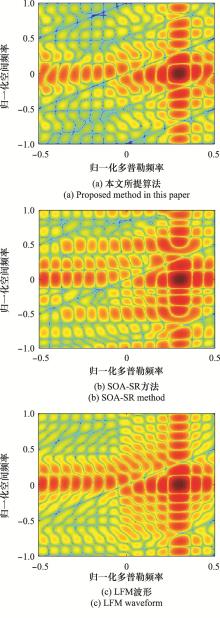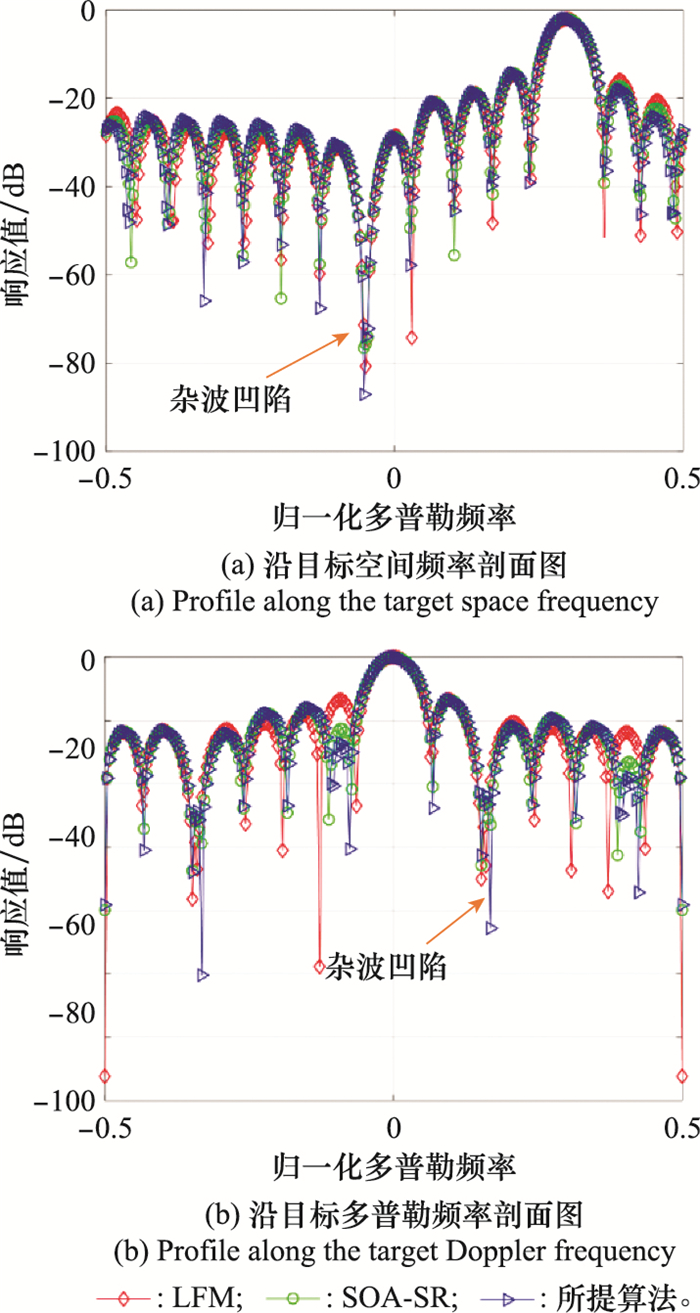| 1 |
ZHOU Q S , LI Z H , SHI J P , et al. Robust cognitive transmit waveform and receive filter design for airborne MIMO radar in signal-dependent clutter environment[J]. Digital Signal Processing, 2020, 101, 102709.
doi: 10.1016/j.dsp.2020.102709
|
| 2 |
GAO H Y , CHEN M H , DU Y N , et al. Monostatic MIMO radar direction finding in impulse noise[J]. Digital Signal Processing, 2021, 117, 103198.
doi: 10.1016/j.dsp.2021.103198
|
| 3 |
LI P . Research on radar signal recognition based on automatic machine learning[J]. Neural Computing and Applications, 2020, 32 (2): 1959- 1969.
|
| 4 |
LEI F , CROW W T , KUSTAS W P , et al. Data assimilation of high-resolution thermal and radar remote sensing retrievals for soil moisture monitoring in a drip-irrigated vineyard[J]. Remote Sensing of Environment, 2020, 239 (15): 111- 125.
|
| 5 |
VASANELLI C , SERIO A D . Corrections to assessment of a millimeter-wave antenna system for MIMO radar applications[J]. IEEE Antennas and Wireless Propagation Letters, 2020, 19 (4): 720.
doi: 10.1109/LAWP.2020.2972656
|
| 6 |
黄鹏辉, 邹子豪, 刘兴钊, 等. 稳健的机载预警雷达多通道海杂波抑制方法研究[J]. 电子与信息学报, 2021, 43 (9): 2680- 2687.
|
|
HUANG P H , ZHOU Z H , LIU X Z , et al. Robust sea clutter suppression method for multichannel airborne radar[J]. Journal of Electronics & Information Technology, 2021, 43 (9): 2680- 2687.
|
| 7 |
ROSENBERG L , WATTS S , GRECO M S . Modeling the statistics of microwave radar sea clutter[J]. IEEE Aerospace and Electronic Systems Magazine, 2019, 34 (10): 44- 75.
doi: 10.1109/MAES.2019.2901562
|
| 8 |
GUO Y Y , WEI Y S , XU R Q , et al. Fast-time STAP based on BSS for heterogeneous ionospheric clutter mitigation in HFSWR[J]. IET Radar, Sonar & Navigation, 2020, 14 (6): 927- 934.
|
| 9 |
ZHAO J R , WEN B Y , TIAN Y W , et al. Sea clutter suppression for shipborne HF radar using cross-loop/monopole array[J]. IEEE Geoscience and Remote Sensing Letters, 2018, 16 (6): 879- 883.
|
| 10 |
何友. 雷达数据处理及应用[M]. 2版 北京: 电子工业出版社, 2009.
|
|
HE Y . Radar data processing with application[M]. 2nd ed Beijing: Publishing House of Electronics Industry, 2009.
|
| 11 |
BRENNAN L E , REED L . Theory of adaptive radar[J]. IEEE Trans.on Aerospace and Electronic Systems, 1973, 19 (2): 237- 252.
|
| 12 |
WANG W Q . MIMO SAR imaging: potential and challenges[J]. IEEE Aerospace and Electronic Systems Magazine, 2013, 28 (8): 18- 23.
doi: 10.1109/MAES.2013.6575407
|
| 13 |
HAYKIN S . Cognitive radar: a way of the future[J]. IEEE Signal Processing Magazine, 2006, 23 (1): 30- 40.
doi: 10.1109/MSP.2006.1593335
|
| 14 |
巴顿. 雷达系统分析与建模[M]. 北京: 电子工业出版社, 2012.
|
|
BARTON . Radar system analysis and modeling[M]. Beijing: Publishing House of Electronics Industry, 2012.
|
| 15 |
斯科尔尼克. 雷达手册[M]. 北京: 电子工业出版社, 2010.
|
|
SKOLNIK . Radar handbook[M]. Beijing: Publishing House of Electronics Industry, 2010.
|
| 16 |
GINI F , MAIO A D , PATTON L . Waveform design and diversity for advanced radar systems[M]. London: The Institution of Engineering and Technology Press, 2012.
|
| 17 |
KAY S . Waveform design for multistatic radar detection[J]. IEEE Trans.on Aerospace and Electronic Systems, 2009, 45 (3): 1153- 1166.
doi: 10.1109/TAES.2009.5259190
|
| 18 |
BELL M R . Information theory and radar waveform design[J]. IEEE Trans.on Information Theory, 1993, 39 (5): 1578- 1597.
doi: 10.1109/18.259642
|
| 19 |
TANG B , TANG J . Joint design of transmit waveforms and receive filters for mimo radar space-time adaptive processing[J]. IEEE Trans.on Signal Processing, 2016, 64 (18): 4707- 4722.
doi: 10.1109/TSP.2016.2569431
|
| 20 |
ZIONTS S . Programming with linear fractional functionals[J]. Naval Research Logistics Quarterly, 1968, 15 (3): 449- 451.
doi: 10.1002/nav.3800150308
|
| 21 |
LIU J , LI H B , HIMED B . Joint optimization of transmit and receive beamforming in active arrays[J]. IEEE Signal Processing Letter, 2014, 21 (1): 39- 42.
doi: 10.1109/LSP.2013.2289325
|
| 22 |
KARBASI S M , AUBRY A . Knowledge-based design of space-time transmit code and receive filter for a multiple-input-multiple-output radar in signal-dependent interference[J]. IET Radar, Sonar & Navigation, 2015, 9 (8): 1124- 1135.
|
| 23 |
王鹏峥, 李杨, 张宁. 环境感知信息辅助的认知雷达波形参数智能选择[J]. 信号处理, 2021, 37 (2): 186- 198.
|
|
WANG P Z , LI Y , ZHANG N . Environment sensing information aided waveform parameters intelligent selection for cognitive radar[J]. Journal of Signal Processing, 2021, 37 (2): 186- 198.
|
| 24 |
李旭涛, 王首勇, 金连文. 应用Alpha稳定分布对雷达杂波的辨识[J]. 电子与信息学报, 2008, 30 (9): 2042- 2045.
|
|
LI X T , WANG S Y , JIN L W . Radar clutter recognition using Alpha stable distribution[J]. Journal of Electronics & Information Technology, 2008, 30 (9): 2042- 2045.
|
| 25 |
黎湘, 范梅梅. 认知雷达及其关键技术研究进展[J]. 电子学报, 2012, 40 (9): 1863- 1870.
doi: 10.3969/j.issn.0372-2112.2012.09.025
|
|
LI X , FAN M M . Research advance on cognitive radar and its key technology[J]. Acta Electronica Sinica, 2012, 40 (9): 1863- 1870.
doi: 10.3969/j.issn.0372-2112.2012.09.025
|
| 26 |
HORN R A , JOHNSON C R . Matrix analysis[M]. Cambridge: Cambridge University Press, 2012.
|
| 27 |
张贤达. 矩阵分析与应用[M]. 北京: 清华大学出版社, 2013.
|
|
ZHANG X D . Matrix analysis and applications[M]. Beijing: Tsinghua University Press, 2013.
|
| 28 |
BOYD S , BOYD S P , VANDENBERGHE L . Convex optimization[M]. Cambridge: Cambridge University Press, 2004.
|
| 29 |
LUO Z Q , MA W K , YE Y . Semidefinite relaxation of quadratic optimization problems[J]. IEEE Signal Processing Magazine, 2010, 27 (3): 20- 34.
doi: 10.1109/MSP.2010.936019
|
